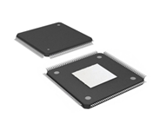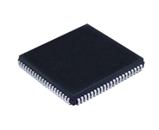



















Programmable logics at Bürklin Elektronik
In the context of logic programming, complex programmable logic devices (CPLD) and field-programmable gate arrays (FPGA) play an important role. These are electronic circuits consisting of components such as diodes, resistors and transistors. These, in turn, are interconnected by wires or traces.
Comparison of CPLD and FPGA at Bürklin Elektronik
The two logics already differ from each other in their structure. CPLDs are composed of several programmable function blocks. In each of them, macrocells are the main building blocks. The inputs and outputs of the function blocks are connected via the Global Interconnection Matrix (GIM). The main advantages include non-volatile memory and low-cost acquisition.
FPGAs offer more logic resources and memory elements compared to CPLDs. This logic consists of a semiconductor device that contains a matrix of configurable logic blocks. The individual blocks work together based on programmable interconnections. Modern FPGAs have about 330,000 logic blocks with 1,100 inputs and outputs.
The design of the FPGA's circuitry is done using the hardware description language. During configuration, simple AND gates or more complex systems executed as multi-core processors are possible. The configurations are stored in RAM. They are deleted in the event of a power failure.
Tip from Bürklin Elektronik on programmable logics
The decision whether to choose a CPLD or an FPGA depends on the intended use and the need for logic resources and memory elements. If you need assistance in selecting a logic, contact [email protected]!

